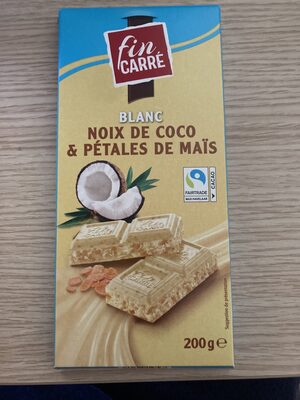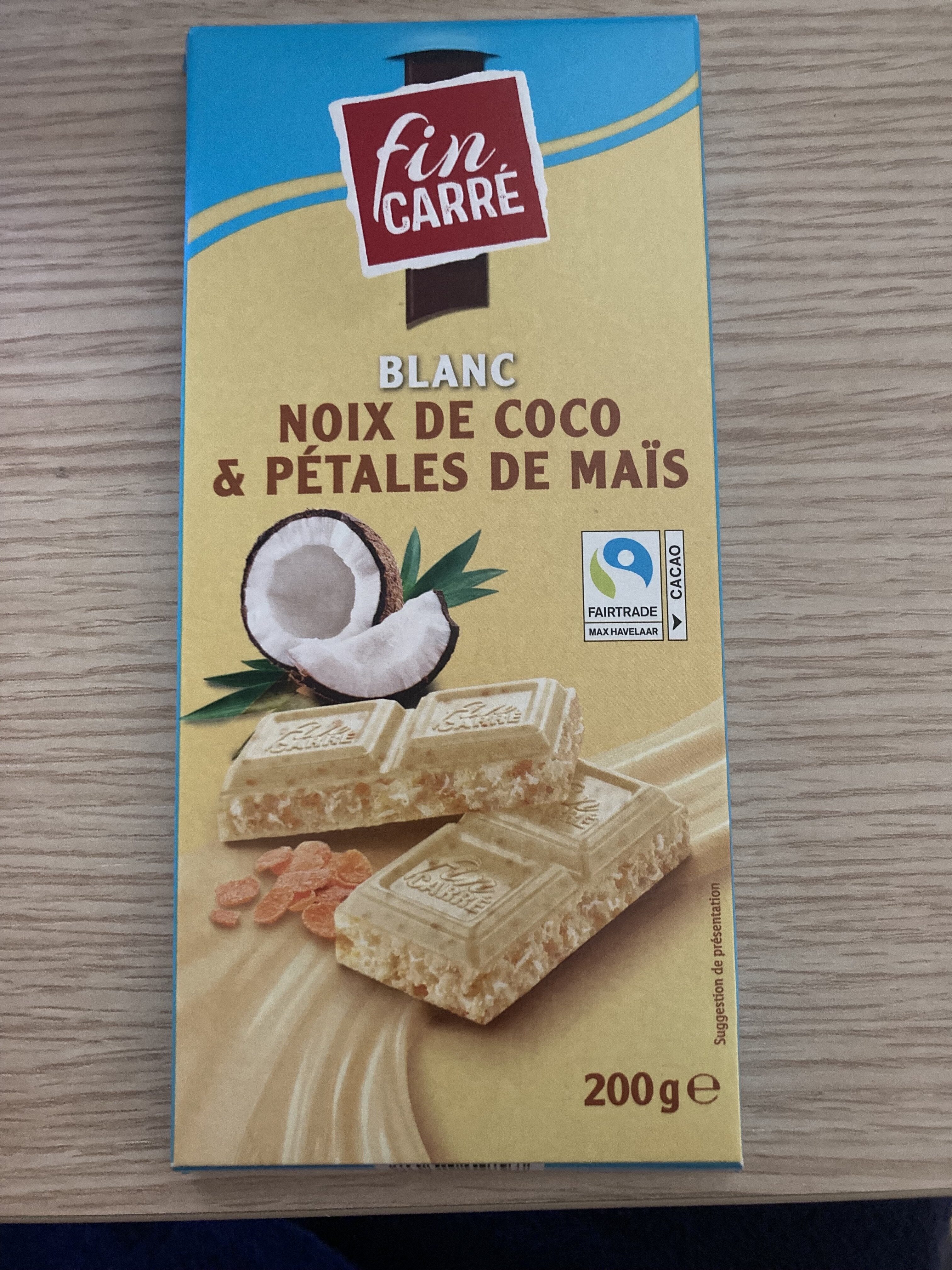White chocolate with coconut flakes and cornflakes, coconut flakes and cornflakes - Fin Carré - 200 g
Ambiguous barcode: This product has a Restricted Circulation Number barcode for products within a company. This means that different producers and stores can use the same barcode for different products.
×
This product page is not complete. You can help to complete it by editing it and adding more data from the photos we have, or by taking more photos using the app for Android or iPhone/iPad. Thank you!
×
Barcode: 20481957
Quantity: 200 g
Packaging: Metal, Cardboard, FSC cardboard, Sleeve
Brands: Fin Carré, Lidl, Bellarom
Brand owner: LIDL
Categories: Plant-based foods and beverages, Plant-based foods, Fruits and vegetables based foods, Snacks, Breakfasts, Cereals and potatoes, Sweet snacks, Cereals and their products, Cocoa and its products, Fruits based foods, Breakfast cereals, Dried products, Fruits, Chocolates, Dried plant-based foods, Flakes, Tropical fruits, Cereal flakes, Dried fruits, Extruded cereals, Extruded flakes, White chocolates, Corn flakes, Coconuts, Grated coconut, White chocolate with coconut pieces
Labels, certifications, awards:
Fair trade, Fairtrade International, Sustainable farming, FSC, FSC Mix, UTZ Certified


Traceability code: FSC-C021442
Stores: Lidl
Countries where sold: France, Germany, United States
Matching with your preferences
Environment
Carbon footprint
Packaging
Transportation
Labels
Report a problem
Data sources
Product added on by sebleouf
Last edit of product page on by inf.
Product page also edited by bugmenot, ecoscore-impact-estimator, karbon, kiliweb, mathieu-derelle, misterwhite, moon-rabbit, mseifert, openfoodfacts-contributors, org-database-usda, packbot, roboto-app, tacite, yuka.UnFzbEVMWVkrZjhKeGRnMDh6M3E2OUY4NExPalFseStMOUZQSVE9PQ, yuka.WUtOUU1JZ0VpYWNqdWNNOHBSbnY0NDEvL0tXd1kwaXhFdWhPSVE9PQ, yuka.WXZ3aklxdGJpOEFwbU13djVrMkwxK0pQeWErQUJHR29NKzhLSWc9PQ, yuka.sY2b0xO6T85zoF3NwEKvllV6QsL--jGfFxntpB3Rw9eOcZDFZfdxyZjQMKs.












